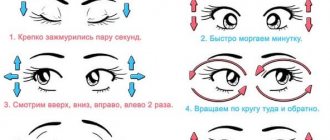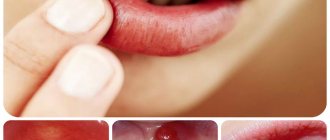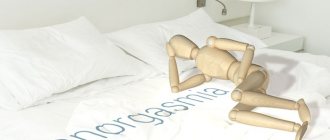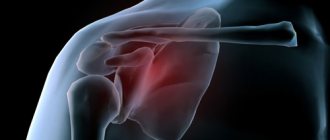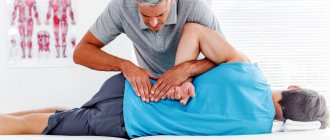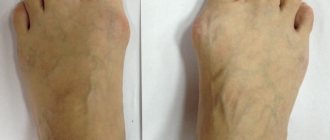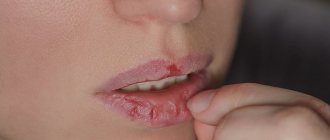Flat feet. Such a scary (for mothers) and incomprehensible diagnosis. “Doctor, look, my child has a completely flat foot!” — I hear every day from parents of 1-4 year old children at the reception.
In search of new information, I “came across” an excellent article by an orthopedic doctor at Russia’s leading children’s orthopedic institute named after. G.I. Turner (St. Petersburg). With the retention of authorship, but with my notes and additions (I mark my remarks with footnotes), I publish this article:
Vladimir Markovich Kenis - Deputy Director of the Federal State Budgetary Institution "Research Children's Orthopedic Institute named after G.I. Turner", Head of the Department of Foot Pathology, Neuroorthopedics and Systemic Diseases, Doctor of Medical Sciences, Member of the European Society of Pediatric Orthopedists and the American Academy of Cerebral Palsy .
What is flat feet
A disease of the musculoskeletal system is a change in the shape of the foot with smoothing of its natural arches. Women are almost four times more likely to get the disease. The foot has a complex structure and is a harmonious, well-coordinated mechanism that includes bone elements, tendons and muscles.
The bone frame has 3 sections:
- tarsus - includes seven short spongy bones in two rows;
- metatarsus - consists of five short tubular bones, the heads of which are connected to the phalanges of the fingers;
- fingers - include 3 phalanges: nail, middle, main, with the exception of the thumb, which does not have a nail phalanx.
From birth, a person has an almost flat foot; as it grows, it acquires natural curves - arches. They increase gradually to normal values. After the final formation of the foot, the growth zones close. The arches are an important structural element that ensures the functionality of the foot. Every person has two vaults:
- Transverse - less noticeable, looks like an arch at the base of the fingers. It is supported by ligaments, tendons, and the adductor pollicis muscle.
- Longitudinal - a curve on the inside from the heel to the joint of the big toe, which is clearly visible.
Due to properly formed arches, the foot performs a number of important functions:
- responsible for balance and the ability to walk on uneven surfaces;
- acts as a shock absorber and softens shocks when walking;
- distributes the load on the body during movements.
The arches help maintain normal movement; if they are properly shaped, the ankle, knee, and hip joints are not overloaded and function fully. Normally, the foot has three points of support: the heel, the head of the 1st and 5th metatarsal bones. With flat feet, they change, which greatly affects the mechanics of walking. This leads to various disorders of the musculoskeletal system.
The spine is also subject to stress when walking, so its work also depends on the condition of the foot and its arches. If they are changed, they can no longer cope with their functions to the required extent. This causes the overlying structures to take over the functions of the foot. But since this is unusual for them due to the additional load on the joints, the spine undergoes various pathological changes much earlier.
Therapeutic massage for flat feet
With the help of massage, the muscles become toned, improve blood circulation in the feet and relieve pain.
Usually 10 to 15 sessions are prescribed. Massage movements are performed on the limbs from the toes to the lower back, since the entire system is connected and treated comprehensively. Here are the necessary techniques:
- The toes are extended and bent.
- Stroke the skin with your palm or knuckles.
- The arches of the feet and toes tingle.
- Rub the sole with your fingertips in a circular manner, affecting the points.
- Patting, tapping and pressing produce vibrations.
Causes
Taking into account statistical data, the pathology is congenital in approximately 3% of all identified cases of the disease. Flat feet can occur at any age due to a variety of reasons. Flattening of the arches can be caused by:
- excess body weight;
- pregnancy;
- heavy physical activity;
- wearing uncomfortable, tight shoes, their incorrect selection for sports activities, which can also cause injury;
- a sedentary lifestyle with a lack of stress on muscle tissue, which contributes to its weakening and the inability to maintain the correct position of the foot;
- work that requires you to constantly stand on your feet;
- diseases of the joints and connective tissue, leading to foot deformation;
- potassium deficiency and disturbance of its metabolism;
- limb injuries.
The cause can also be diseases of the central nervous system, in which sensitivity and movement in the legs are impaired or completely disappear. But shoes still take the leading position among all risk factors. This is confirmed by the fact that women suffer from flat feet much more often than men. Wearing shoes with a heel higher than 4 cm is already a threat to the foot, and the higher it is, the greater the likelihood of developing foot deformity and its complications.
When wearing heels, the center of gravity shifts, the angle of inclination in the ankle increases, which overloads the forefoot. Due to such a load, the transverse arch begins to change, which ultimately leads to flat feet. But not only heels are dangerous, but also shoes with completely flat soles, especially for children when the period of formation of the foot has not yet completed. To eliminate this risk factor, adults need to wear shoes with a heel height of no more than 3-4 cm, and children - 1-1.5 cm.
Is it possible to cure flat feet in an adult?
Organs and tissues change more easily under external influences while the body grows. Once the cartilaginous growth zones are closed, the shape of body parts cannot be significantly affected. Therefore, it will not be possible to significantly increase the height of the arches in an adult without surgery. By the way, the vast majority of diseases in adults cannot be treated. Only diarrhea or a cold goes away on its own. Hypertension, allergies, diabetes, arthrosis, glomerulonephritis, heart disease, flat feet can be controlled and “put to sleep”, but not completely eliminated.
And the phrase “flat feet cannot be cured” only means that an adult does not yet have the opportunity to make his feet taller. But this does not mean that nothing needs to be done about flat feet. After all, the problem is not the flattening of the arch, but the loss of shock absorption, without which all organs of the body suffer.
Classification of flat feet
According to the nature of the changes in the arches, transverse, longitudinal and combined flat feet are distinguished. In the latter case, flattening of both the transverse and longitudinal arches is observed. Taking into account the reason that caused the pathology, the following types of flat feet are distinguished:
- rickets – applies to children with rickets. During the period of intensive growth, the supply of minerals to the bone tissue is disrupted, it weakens and becomes more pliable. This is reflected in the foot as deformation due to the heaviness of the child’s weight;
- traumatic – the result of injuries: bone fractures, damage to joints, tissues of the arch;
- paralytic – associated with paralysis of the muscles of the arch;
- static – the result of heavy loads that the muscular-ligamentous apparatus cannot cope with;
- congenital – occurs against the background of congenital malformations of the elements of the foot.
Taking into account changes in the bone frame, height and angles of the arch, 3 degrees of longitudinal flatfoot are distinguished:
- The bones of the foot are not changed, the arch angle is up to 140 °, the height is 3.5-2.5 cm.
- The talus is characterized by shortening and increased prominence of its neck. Arch angle up to 155°, height 2.4-1.7 cm.
- A large protrusion appears on the heel bone, the heel moves outward, the foot turns inward, and the big toe is retracted outward.
Normal indicators are considered to be an arch angle of 125-130°, height 3.9-3.6 cm.
Transverse flatfoot has 4 degrees, which takes into account the angle between the first and second metatarsal bones and the angle of deviation of the big toe. Normally, these indicators are less than 9 and less than 14, respectively. The higher the indicators, the higher the degree of transverse flatfoot. There are primary and secondary flat feet. The first occurs as an independent disease, the second - as a result of other pathologies.
Types of pathology
There are congenital (extremely rare) and acquired flat feet.
According to another classification, flat feet can be:
- longitudinal – the longitudinal arch is flattened, as a result of which the foot lengthens;
- transverse – the transverse arch is smoothed out, causing the foot to become wider;
- combined, or longitudinal-transverse - both arches are violated.
Depending on the cause of the pathological changes, flatfoot is classified into static (observed in 82% of cases), rachitic, paralytic, and traumatic.
Symptoms
Signs of flat feet depend on the severity. In the early stages of development, symptoms are mild, patients do not feel discomfort. If there is no heavy physical activity, the development of the disease can drag on for years without much impact on well-being or ability to work. But still, upon detailed questioning, patients notice a number of symptoms that are usually not paid much attention to:
- increased fatigue of the legs during prolonged walking and standing;
- aching pain in the feet at the end of the day;
- slight swelling of the feet;
- tightness of the calf muscles;
- problems with choosing shoes;
- the appearance of rough skin (corns) in the area of the thumb.
With flat feet, there are a number of external signs: the inside of the shoe wears out quickly, the foot increases in size, so you have to buy larger shoes. Even high-quality shoes that previously fit become uncomfortable, so a person is forced to purchase more spacious ones.
As the disease progresses, all of these signs become more pronounced. The main symptom is pain, most often it is noted in the foot, calf muscles, and under the knee. In later stages, pain appears in the joints of the limb, sacral, and lumbar spine. It does not appear spontaneously, but gradually, and increases taking into account the load on the body. It is especially pronounced towards the end of the working day if a person has been walking and standing for a long time.
Transverse-longitudinal flatfoot, stages
Most often, a combination of transverse and longitudinal flatfoot in both feet is diagnosed. Unilateral damage is usually associated with various injuries. Symptoms vary depending on the extent (stage) of the disease.
- In the first, the ligamentous apparatus weakens, but the foot still retains its natural shape. During this period, a person feels the first unpleasant symptoms after prolonged stress on the legs in the form of burning, fatigue in the limbs, which disappear after rest. For some people, already at the first stage, the gait becomes less flexible.
- At the second stage, changes in the foot in the form of flattening of the arches are visible to the naked eye. It becomes wider, spread out, and in the area of the thumb you can notice a small protruding tubercle. The pain becomes constant, spreading above the foot to the lower leg and knee joint. The gait changes even more - clubfoot occurs.
- At the third stage, the changes are sharply expressed, which provokes degenerative-dystrophic lesions of the joints. The disease also affects the condition of the spine, especially the intervertebral discs, which can cause osteochondrosis, intervertebral hernias, and curvature of the spine. Pain in the limbs accompanies a person constantly and gets worse all the time. At this stage, a person’s performance decreases and even walking short distances causes difficulties.
Relationship between bite and human posture
– Are the teeth, their correct/incorrect arrangement, and the spine connected?
– This is an interesting question. Indeed, there is a definite evidence base for the correlation between bite and human posture. There is such a discipline as posturology, it is not entirely medical, but rather biological. Posturology speaks not so much about diseases as about variations in normal human posture. Posturological studies show that changes in occlusion due to orthopedic interventions can affect a person's posture. It is difficult to say today how much this all correlates with the criteria of health or illness. These are largely empirical and biological arguments.
Posturology, by and large, is a biological discipline about healthy people, while medicine deals with diseases. Changes in posture rather relate to the individual characteristics of a person; they cannot, at least at the current level of development of medicine, be attributed to diseases.
– Do orthodontists know this?
– Orthodontists know that changes in bite can change posture. But the next question is: what does a change in posture bring? For example, all traumatologists know that hair grows under a cast; this is an absolute biological fact. After being under a cast for a long time, quite thick hair grows on the leg or arm, usually black, this is especially upsetting for girls and young women. We don't know why this happens, but it's a fact.
– What if we put a cast in place of the bald spot?
– That was my first thought when I saw this in residency! It hasn’t occurred to anyone to do this yet; it’s technically difficult. So, we know that this pattern exists. We don’t know why it is, but we also don’t know how important it is for a person. After changing the bite, the posture changes. We don’t yet know how important this is for human health. Further research in this area is certainly needed.
How to independently determine the presence of flat feet
In addition to identifying symptoms characteristic of the disease, you can additionally conduct a simple test at home for the purpose of tentative diagnosis. Lubricate the sole of the foot with any coloring substance, for example, fatty cream. Place a sheet of white paper on the floor and leave your foot print on it. The main thing is that the load on the foot is uniform, that is, you need to stand in your normal position, without deviating to the side.
Using a pencil, draw a parallel line from the heel to the big toe and another line perpendicularly - from the deepest neckline to the outer edge of the foot. Next you need to evaluate the print. If it occupies half or more of a perpendicular line in the area of the narrowest part of the foot, this may indicate the presence of flat feet. The norm in children and adults is different, so this test in children can indicate the normal development of the structure of the foot.
Leave a mark
...The child ran barefoot across the sand and left a chain of footprints. An attentive mother will not only be touched, but will also note whether they are “embellished” enough. If there is the slightest doubt, he will conduct a home test - it is not complicated. It is enough to lubricate the child’s feet with a dye (beetroot juice, watercolor - anything will do) and ask him to stand on a prepared clean sheet of paper.
Is the foot imprinted almost entirely? We can talk about overpronation - the very same flat feet. Is there a uniform taper towards the center in both prints? Great, the foot is working as it should.
However, let’s make a reservation: only a doctor can make a verdict on the existing deviations, using a special device for professional diagnostics - a mirror podoscope with contrast illumination.
Diagnosis of the disease
Identifying flat feet begins with taking a medical history to find out what foot complaints the patient has and when they began. Next, they proceed to the inspection, where special attention is paid to the following points:
- foot skin color;
- presence of thickened skin, calluses;
- position of the big toes when the foot is tightly closed;
- the presence of deviations of the foot inward or outward;
- changes in the anterior and calcaneal regions.
Even without instrumental diagnostics, based on complaints and examination, flat feet can be suspected based on the following points:
- the presence of a protruding “bone” near the thumb;
- wear on the inside of shoes;
- rapid fatigue in the legs during prolonged walking or standing;
- an increase in the volume of the foot - the inability to wear your favorite shoes that previously fit;
- swelling, aching pain in the legs, feeling of heaviness at the end of the day;
- discomfort when wearing high-heeled shoes;
- violation of posture and gait;
- Difficulty maintaining balance when squatting.
To make an accurate diagnosis, determine the degree of deformation, and select the most effective treatment tactics, patients are required to undergo a number of studies.
Computer plantography
An improved and accurate method for diagnosing foot diseases using foot prints. The technique is simple, painless and highly informative. Before the examination, the doctor enters all information about the patient into the computer system. The patient stands barefoot on a special platform that looks like glass. The device scans, and in order to obtain more accurate information, the examination is carried out in different planes.
Podometry
A method for diagnosing flat feet with determination of the Friedland index of the longitudinal and transverse arches. It represents the ratio of the height of the foot to its length as a percentage. Normally, the longitudinal arch index is 29-31%. If the indicator decreases, this indicates flat feet. The transverse arch index should not exceed 40%.
Podography
A research method for studying the biomechanics of walking. The procedure is carried out using special equipment - shoes with metal plates and a metal-coated track. During podography, the duration and width of the step, turn of the foot, and gait characteristics are recorded.
X-ray examination
It is necessary to identify changes in the bones of the foot, determine the degree of the disease, and monitor dynamics during treatment. Using X-ray images, you can accurately determine the height of the arch, the angle of the longitudinal arch, and the intermetatarsal angles.
Treatment of flat feet
Flat feet are treated conservatively, surgically, which is decided individually taking into account:
- age of the patient;
- degree of disease and its progression;
- presence of complications;
- mobility restrictions.
Regardless of the chosen method of treatment, one cannot count on a quick result, since the disease is difficult to correct. It takes time, patience from the patient and concentration of his energy on treatment. The effectiveness of therapy is higher in children, since their arches are still forming and are easier to influence.
Conservative therapy
This type of therapy is aimed at reducing the rate of disease progression, preventing complications, maximizing relief from negative symptoms and includes a number of measures.
Massotherapy
The essence of the technique is to influence ligaments, biologically active zones, muscles in order to increase blood flow, improve metabolic processes, get rid of fatigue in the legs, and normalize muscle tone. Therapeutic massage is prescribed at any stage of flat feet; it is especially effective in the early stages of the development of pathology. The procedure must be performed by a specialist, but self-massage at home is allowed. In addition, it is necessary to use mats, massage rollers, balls and other special devices.
When flat feet are detected in children, it is recommended to walk barefoot as much as possible on various uneven surfaces: stones, sand, grass. If this is not possible, walk on a massage mat. Walking on different types of convexities affects multiple biologically active points, which the foot is very rich in. Massage mats are used not only for therapeutic purposes, but also for preventive purposes.
Physiotherapeutic procedures
Effective for all stages of flat feet, especially for pain and impaired joint mobility. Physiotherapy is used only in complex treatment. Her goal:
- reduce inflammatory processes;
- relieve pain;
- improve blood circulation;
- normalize muscle tone;
- strengthen the vaults.
Physiotherapy procedures include electrophoresis with medications, phonophoresis, and magnetic therapy. Shock wave therapy deserves special attention. It has a beneficial effect on cartilage and bone tissue, destroys salt deposits without having a damaging effect on healthy cells.
Exercise therapy
Regular, long-term and properly selected exercises show high effectiveness in the initial stages of the disease, especially in combination with other methods of conservative therapy. Physical therapy is prescribed to all patients. Effect of exercise therapy:
- improved blood circulation;
- strengthening muscle tissue and ligaments;
- formation of correct arches;
- improvement of gait and foot placement.
A set of exercises is selected for each patient, taking into account the severity of the disease, age, concomitant pathologies and other nuances. The first classes should be conducted by a specialist so that the patient can master the correct technique for performing the exercises; in the future, the person can practice independently at home.
It is better to perform exercises in the morning; you need to do them before the muscles become tired, and increase the load gradually. Swimming has a positive effect on the entire musculoskeletal system. Regular exercises have a positive effect not only on the condition of the foot, they become an excellent prevention of spinal curvature and osteochondrosis. By strengthening the back muscles, the spine will receive additional support.
Orthopedic insoles
Properly selected shoes and orthotics significantly improve the quality of life. It allows you to correct structural changes in the foot, evenly distribute the load on the foot in order to remove overload from other parts of the musculoskeletal system. Custom orthopedic insoles are especially necessary:
- athletes;
- pregnant women;
- persons who experience heavy stress on their legs due to a certain type of activity: sellers, hairdressers, surgeons.
Insoles correct incorrect foot position relatively quickly and painlessly. They perform a passive correction - they relieve many of the unpleasant symptoms of flat feet, but do not improve the condition of the muscles. Insoles should not be used as the only method of treating the disease; it must be complemented by other methods. General functions of orthopedic insoles:
- improvement of the general condition of the patient;
- support of arches in normal position;
- improvement of blood circulation in the extremities;
- reduction of fatigue, pain, heaviness in the legs;
- reducing the likelihood of complications;
- increasing stability during any physical activity.
Wearing orthotics not only makes life easier, but also stops the further progression of the disease.
Surgery for flat feet
If conservative therapy does not produce results, the disease progresses, complications develop, in such situations the issue of surgical treatment of flat feet is decided. In the final stages of transverse, longitudinal and combined flatfoot, this is the only way to improve the patient’s quality of life.
There are about 500 methods of surgical treatment, all of them can be divided into three groups:
- on soft tissues;
- on the bones;
- combined.
Most often, operations are used to move tendons in order to tighten and correct the position of bones and form a normal arch. Often, an osteotomy is performed, in which surgeons make an artificial bone fracture in order to later move the bone fragments into the desired position.
In very rare cases, arthrodesis is performed. This is an operation in which the articular surfaces of certain bones are fused with special clamps to ensure their immobility. Often, combined flatfoot is combined with hallux valgus - the formation of a protruding tubercle (bone, bump on the foot) in the area of the big toe. During surgical treatment, this callus is additionally removed, since it also negatively affects the functionality of the foot.
“Insoles and shoes affect the shape of a child’s foot in the same way as a hat affects the shape of his head.”
– All parents of babies are tested by a difficult struggle between a hard back and a soft sole. Should shoes have a hard heel when a child learns to walk? Or are Western doctors right when they say that you need to walk barefoot?
– The human foot is designed for walking barefoot. Humanity has been wearing shoes in the current sense of the word for the last 500 years, probably, and in Russia it’s been like this for about 200 years. Until recently, all of Russia walked in bast shoes, they didn’t have any backs - neither high nor low - and people did not die out from flat feet .
The formation of the arch of the foot has nothing to do with shoes at all.
At the Galen Clinic we use ancient Greek statues as an example: the ancient Greeks did not have shoes! Look how beautifully formed their feet are! The arch of the foot is a genetically programmed element of its anatomy. Biologically, the foot is adapted only to walking barefoot
One of the great modern American podiatrists said: “Insoles and shoes affect the shape of a child’s foot just as a hat affects the shape of his head.” That is, no way! It is definitely impossible to change the shape of your feet for the better with shoes!
Where did this high back story come from? There was an empirical postulate that if you set a certain pattern for the growth of the foot in the form of a high heel or arch support, then the foot will develop along this pattern, but this has not been confirmed by any research.
To roughly imagine the analogy, we can recall the story of mustard plasters and jars. If 30 years ago a child started coughing, a pediatrician would come to him and prescribe him mustard plasters or cups, or both. If now a pediatrician comes to your coughing child and prescribes mustard plasters or cupping, then next time you will call another pediatrician.
You don’t wonder why mustard plasters or cans disappeared. But they disappeared because their effectiveness has not been confirmed by anything, and 30 years ago this effectiveness was not discussed at all; it was a priori believed that mustard plasters and cups would be useful for a coughing child. Medicine is changing, it is changing based, first of all, on the principle of evidence.
If you look at your palm, you will see that there is a notch on your palmar surface, the so-called “arch of the hand.” Have you ever worn gloves with high, hard cuffs? No? How did your hand form if you never wore hand supports? Where did you get this dimple on your hand? You are evolutionarily programmed to have it. The size of this notch is different for everyone. I have it a little more, you have it a little less.
Little of! As a rule, if we put a hard glove on a hand (as my colleague cites in the article), we will significantly worsen the function of the hand, for example, in a hard glove you will not be able to draw or sculpt.
It's highly likely that I have a slightly larger arch than you. It is possible that you have a tendency to flatten the arch of your feet, do you personally?
- Maybe. And children have it.
– Children have a slightly different story. When children are born, they have two fat bodies: one on the cheek to facilitate sucking, the so-called “Bishat fat pad”, the other is the fat pad on the foot, this is a built-in arch support that gradually dissolves. If you look at a newborn baby's foot, it is slightly arched and springy. And this “built-in arch support” is not needed to form the arch of the foot, the arch of the foot is formed according to other laws, it is needed to soften the load. If this lump experiences excessive pressure, it may dissolve faster.
But there is a nuance regarding arch support in shoes. Can you imagine a car steering wheel? When you take the steering wheel, it is more comfortable for you when it is not smooth, but has a texture on it. It follows the shape of your brush. It’s a similar story with shoes – the most comfortable shoes are those that, to one degree or another, follow the topography of your foot, so good, comfortable, convenient shoes always have a plantar surface lining. There, as a rule, there are instep supports. The same applies to sports shoes, on which the result of competitions largely depends - they always have an instep support. But not so that the athlete’s arch is formed, but so that the foot feels as comfortable and stable as possible.
There is one more nuance. In children under three years of age, foot propulsion is not sufficiently developed. Children under three years old walk as if waddling. There is an English word that is typical for children from one to two - two and a half years old, this word toddler, roughly translated as “stomper,” that is, a child who does not yet walk confidently. There is no single word in the Russian language that would describe such a gait. In these children, indeed, due to their age, the function of the ankle joint is not yet sufficiently formed.
I call this gait “bear-toed.” Slightly waddle, swaying from side to side
So these kids, at least in theory, have some justification for wearing taller shoes to improve stability. If a child walks unsteadily barefoot or in low-backed shoes, and you put high-backed shoes on him, and he walks more steadily in them and falls less, then for this situation there is at least some biological basis for high-backed shoes - for situational improvement of resilience. The maximum when this is biologically necessary is up to three years.
Unfair marketing tactics
– So, it’s all the same as with cans and mustard plasters? But orthopedic shoes are expensive!
– I wouldn’t like to suspect someone of using some dishonest marketing tactics, but when I come to the store to buy shampoo for myself, and there are two shampoos next to me – one regular, inexpensive, and the other for preventing hair loss – and I have small problems – my hand will reach out to the one for improvement, this is psychology. Although, as a doctor, I understand that it does not improve anything, because if it were so, then the balding male half of humanity would not suffer from complexes.
I completely agree! Orthopedic shoes are needed for children with orthopedic pathology! Nobody prescribes glasses for prevention! Here is another article on our website https://www.galen.by/articles/46-pervaya-obuv-rebenka
So my mother comes to the store to buy shoes, and next to them there are two pairs - one pink, light, comfortable - ordinary, and next to them - shoes that are tall, heavy, scary and expensive, but it says on it that they are for the prevention of flat feet.
Most likely, the hand of a modern Internet-addicted mother will reach for those shoes on which it is written that they are preventative. Consciousness works like this: I want to do everything for my child before it’s too late. This hypothetical “before it’s too late” concept works very well. This is a large marketing niche where consciousness can be manipulated.
And in general it is a question of trust. If, relatively speaking, in Finland a doctor tells a patient that this and that needs to be done, then the patient does it. If in Russia a doctor says that something needs to be done, then 99% of patients, especially mothers, will go online and double-check his opinion. Is it true?
- Certainly!
– Your answer “of course” is very revealing. I'm not even talking about the degree of mutual distrust, this does not concern anyone personally, this concerns the atmosphere. The degree of mistrust in society is too great.
– By the way, now a lot of things are passed from child to child, this is in any country, including shoes. Is it normal to wear shoes after having another baby?
– Shoes are clothes for the feet and nothing more. When you buy panties, do you go to the doctor to consult? Sorry for the question. Probably not. And there are so many fancy things with shoes!
And everything is very simple, shoes are clothes for the feet. The criteria for choosing shoes for children are simple - comfort, lightness, beautiful appearance and true to size.
If you take shoes anywhere, even from a trash heap, and they meet these criteria, then do what you want with basic hygiene. In Russia, and not only in Russia, it is customary that from generation to generation the younger ones wear after the elders, including shoes. Therefore, there is no need to complicate simple things.
Prevention of flat feet
The main way to prevent it is to wear the right shoes. The sole should be thick and soft, the heel no more than 4 cm. Other recommendations:
- if you have a predisposition to the disease, if possible, avoid work that involves prolonged stress on your legs;
- form your gait correctly - do not point your toes apart when walking;
- walk barefoot on uneven surfaces - stones, sand, earth, gravel;
- stand on high heels as little as possible;
- when exercising for a long time, wear insoles;
- after a working day, do a foot massage;
- correctly dose the load, avoid overload.
Proper, balanced nutrition is very important to avoid deficiency of vitamins and microelements, especially calcium.
Flat feet may seem like a harmless disease only at first glance, but if left untreated, it progresses and causes a number of complications. They can be arthritis, arthrosis, hallux valgus, herniated intervertebral discs and other pathologies. Timely consultation with a doctor will help reduce the severity of symptoms and prevent the progression of the disease.


